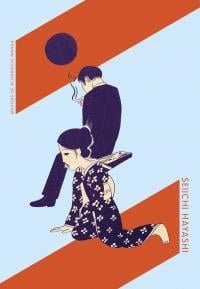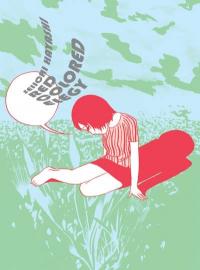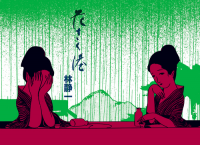-

Anthology of 4 stories. Seiichi Hayashi was a leading figure in the hotbed of avant-garde artistic production of 1960s and early 70s Tokyo. He is best known for his lyrical and experimental manga for Garo, the famous alternative comics magazine. This volume collects a selection of Hayashi’s most important manga from this period, including Red Dragonfly (1968), Yamauba’s Lullaby (1968) and Gold Pollen (1971). Published here in their original full color, these stories mix traditional Japanese aesthetics with Pop art sensibilities, and range in topic from the legacies of Japanese rightwing nationalism and World War II, to the pervasive influence of America over 1960s Japanese youth culture. This first color reprinting of Hayashi’s work captures the vivid experimentation of Japanese art at this time. In addition, Hayashi’s youth and beginnings as an artist are illuminated by an autobiographical essay from 1972, translated here for the first time into English. Art historian Ryan Holmberg discusses Hayashi’s place in postwar Japanese art and manga, as well as his wider contributions to the Tokyo avant-garde as a designer and experimental animator. This lavishly illustrated book is likely to have widespread crossover appeal for design and fashion aficionados, as well as for students of the manga genre.
Genre(s): Drama, Historical
Updated Time: Oct 14, 2018
-

Seiichi Hayashi produced Red Colored Elegy between 1970 and 1971, in the aftermath of a politically turbulent and culturally vibrant decade that promised but failed to deliver new possibilities. With a combination of sparse line work and visual codes borrowed from animation and film, the quiet melancholy lives of a young couple struggling to make ends meet are beautifully captured in this poetic masterpiece. Marginally involved with the political movements of the time, Ichiro and Sachiko hope for something better but aren't revolutionaries; their spare time is spent drinking, smoking, daydreaming, and sleeping--together and at times with others. While Ichiro attempts to make a living from his comics, Sachiko's parents are eager to arrange a marriage for her, but Ichiro doesn't seem interested. Both in their relationship and at work, Ichiro and Sachiko are unable to say the things they need to say, and like any couple, at times say things to each other that they do not mean, ultimately communicating as much with their body language and what remains unsaid as with words. Red Colored Elegy is informed as much by underground Japanese comics of the time as it is by the French Nouvelle Vague, and its cultural referents range from James Dean to Ken Takakura. Its influence in Japan was so large that Morio Agata, a prominent Japanese folk musician and singer songwriter, debuted with a love song written and named after it. "I wanted to live like Sachiko and Ichiro; to have aspirations even while living stoically and humbly." --Morio Agata
Genre(s): Drama, Historical, Psychological, Romance, Slice Of Life
Updated Time: Oct 10, 2019
-

It is 1969, and famed artist Seiichi Hayashi has decided that his comics, having flirted with pop, need some heart and soul. He turns to the moody graphics of old kashihon gekiga and the sentiments of Japanese enka blues. "Because of you, my long life will be withered with frost. This fading shadow of an empty shell ... our love." So laments the heart-broken bar hostess of Flowering Harbour, one of the classic works of the legendary alternative manga magazine Garo.
Genre(s):
Updated Time: Mar 03, 2020
Search Result for